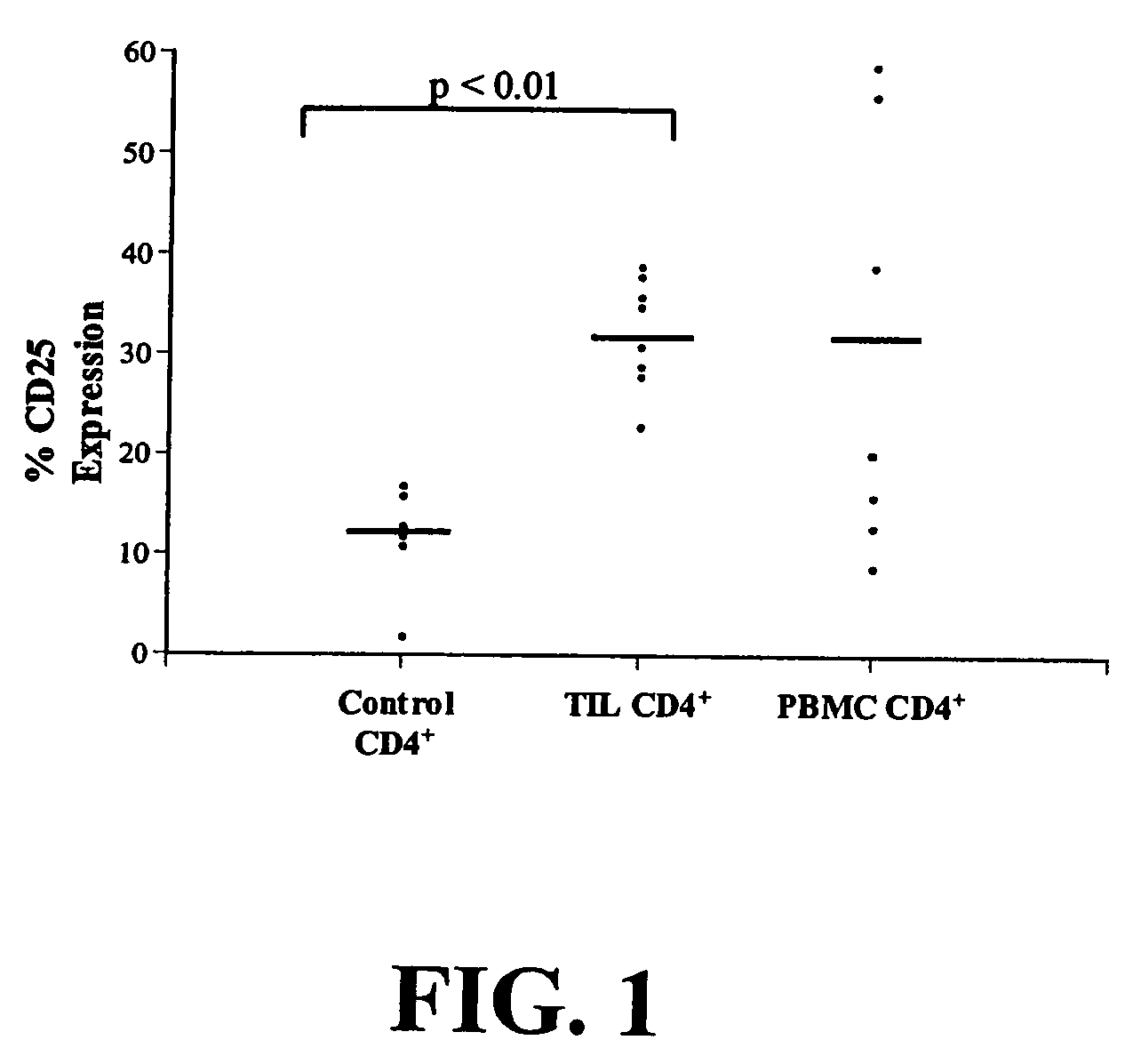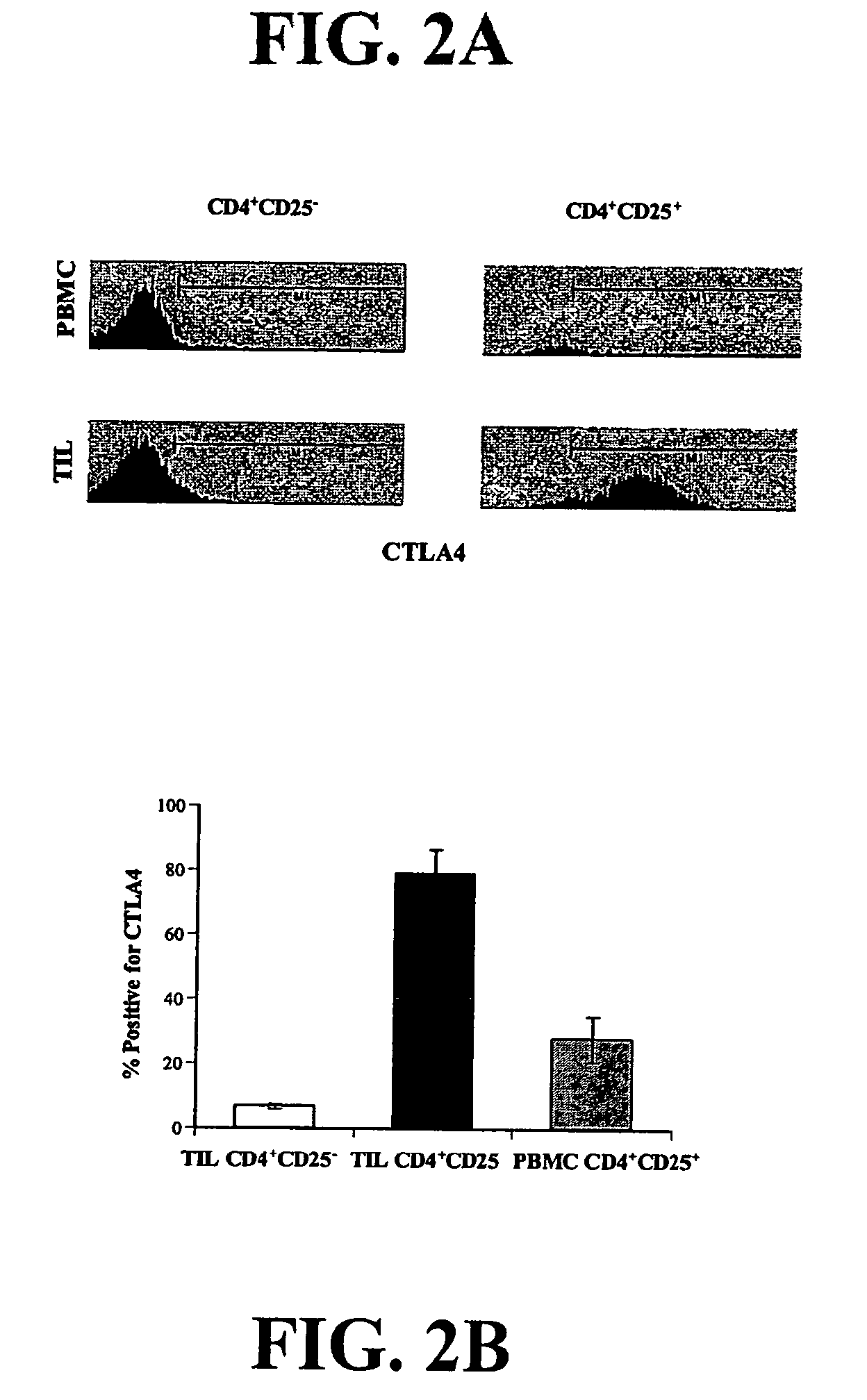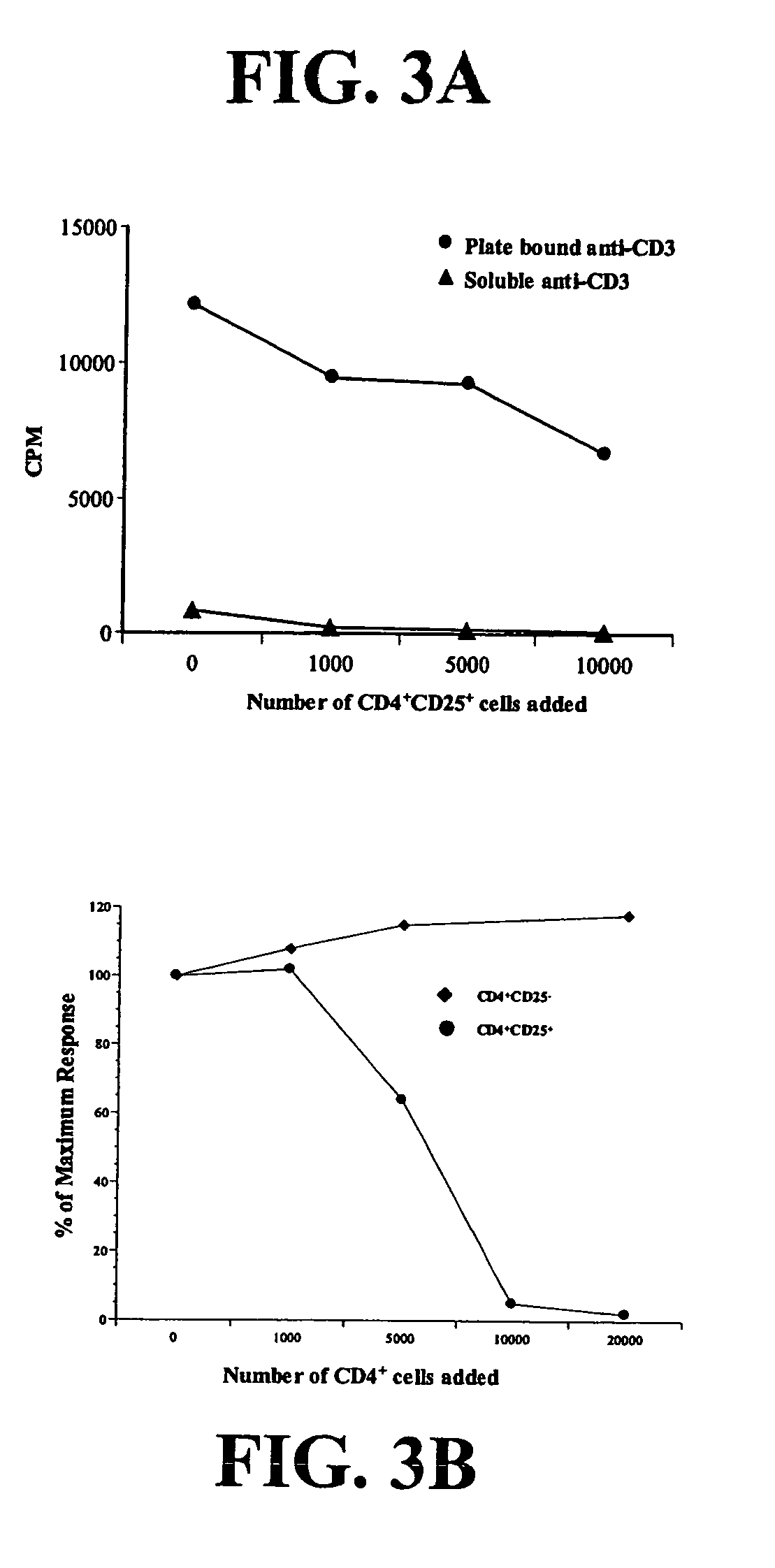Regulatory T cells and their use in immunotherapy and suppression of autoimmune responses
a technology of autoimmune responses and t cells, which is applied in the field of autoimmune response suppression and t cell regulation, can solve the problems of difficult purification of human treg cells, inability to overcome direct t cell stimulation, and inability to translate murine studies into equivalent responses in human cells, etc., to achieve the inhibition of autologous t cell proliferation, prevent alloresponse and autoimmune responses, and induce or maintain tolerance to tumors
- Summary
- Abstract
- Description
- Claims
- Application Information
AI Technical Summary
Benefits of technology
Problems solved by technology
Method used
Image
Examples
example 1
Increased Proportion of CD4+CD25+ Cells in Patients with NSCLC
[0129]Peripheral blood and tumor were collected from patients with either stage I or II non-small cell lung cancer (NSCLC) at the time of surgery after obtaining appropriate informed consent under Institutional Review Board approved protocols. Fresh tumor specimens from 8 NSCLC patients were processed by sterile mechanical dissection followed by enzymatic digestion, as described by Woo et al., 2001. Cells were separated on a Percoll (Pharmacia Biotech AB, Sweden) density gradient. Peripheral blood was obtained at the time of tumor collection, and processed as described by Woo et al., 2001, and frozen.
[0130]Cytokine production was determined by placing 70,000 CD3+CD4+CD25−, or CD3+(−CD4+CD25+) cells into 96-well plates (Falcon, Franklin Lakes, N.J.) for 2-day culture in 200 μl total volume. Supernatants were then harvested and tested for cytokine production using Quantikine human TGF-β, IL-2, and IL-10 ELISA kits (R&D Syst...
example 2
Bright Constitutive Surface Expression of CD152 (CTLA-4) on Tumor Infiltrating Lymphocytes
[0134]Recent studies have shown that CTLA-4 is up-regulated on mouse and human regulatory cells (Jonuleit et al., 2001; Dieckmann et al., 2001; Read et al., 2000). Therefore, the lymphocytes from normal donors and NSCLC patients were analyzed for expression of CD4, CD25 and CTLA-4 by flow cytometry.
[0135]Bright surface expression at levels comparable to CD4 and CD8 levels of expression, rather than the expected dim or undetectable expression of CTLA4 that is usually observed (often requiring permeablizing the cell in order to detect CTLA-4 expression) of CTLA-4 was detected on resting lymphocytes derived from the tumor specimens (FIG. 2), whereas in resting T cells from normal donors, less than 1% of T cells were positive for CTLA-4 expression (data not shown). Therefore, from an evaluation of 2 representative patients demonstrating CTLA-4 expression in CD4+CD25- and CD4+CD25+ TIL and periphera...
example 3
Tumor Infiltrating CD4+CD25+ Cells Inhibit Proliferation of Autologous Peripheral Blood T Cells
[0137]To assess the function of CD4+CD25+CTLA-4+ cells in lung cancer patients, CD4+CD25+ cells were separated from the remaining tumor infiltrating lymphocytes by high speed cell sorting, and their proliferative capacity and effect on T cell proliferation were determined. Regulatory T cells typically fail to proliferate in response to mitogenic stimulation (Shevach et al., J. Exp. Med. 193:F41-F46 (2001)). To confirm this, 50,000 CD4+CD25+ or CD3+ tumor-infiltrating lymphocytes (TIL) depleted of CD4+CD25+ cells were stimulated with immobilized anti-CD3 and anti-CD28. The CD3+ cells depleted of CD4+CD25+ cells proliferated, while the CD4+CD25+ cells did not (data not shown).
[0138]Next, autologous peripheral blood lymphocytes were stimulated under suboptimal or optimal conditions in the presence of increasing numbers of the putative regulatory cells. Autologous PBL were cultured alone or wi...
PUM
| Property | Measurement | Unit |
|---|---|---|
| concentrations | aaaaa | aaaaa |
| volume | aaaaa | aaaaa |
| total volume | aaaaa | aaaaa |
Abstract
Description
Claims
Application Information
 Login to View More
Login to View More - R&D
- Intellectual Property
- Life Sciences
- Materials
- Tech Scout
- Unparalleled Data Quality
- Higher Quality Content
- 60% Fewer Hallucinations
Browse by: Latest US Patents, China's latest patents, Technical Efficacy Thesaurus, Application Domain, Technology Topic, Popular Technical Reports.
© 2025 PatSnap. All rights reserved.Legal|Privacy policy|Modern Slavery Act Transparency Statement|Sitemap|About US| Contact US: help@patsnap.com



